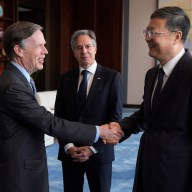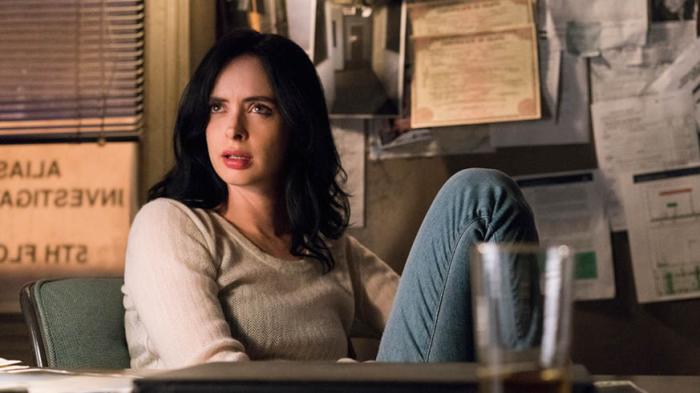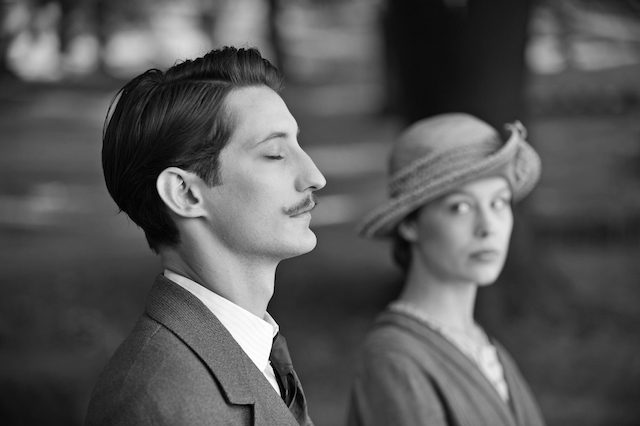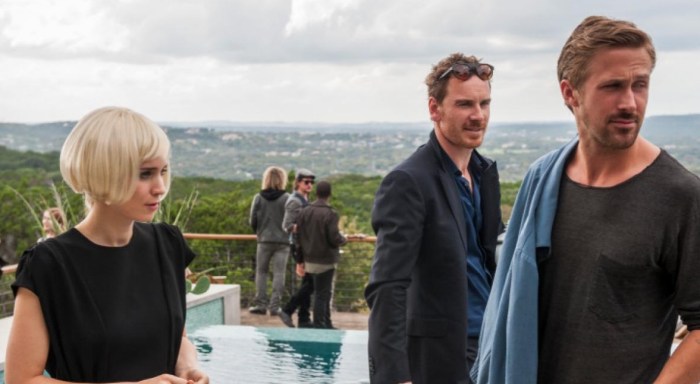‘The 33’ Tragedies, and especially tragedies that end happily, such as the 2010 Chilean mine collapse, are no-brainers for movies. They’re such no-brainers that sometimes filmmakers don’t think about the best way to re-tell them, or if they can be re-told at all. There are a lot of moving parts in “The 33,” about the miners who spent 69 days trapped miles under near-impenetrable rock outside of Copiapo. There’s the near-victims themselves. There are the engineers who worked around the clock to save them. There’s the family members who never left a makeshift camp near the mine. And there’s the international response, from those who came in to help to the entire world watching their belated escape live. RELATED: Antonio Banderas on what it’s like to shoot in a mine for “The 33” A more deftly controlled film could have weaved between these segments; a more bold film would have chosen one, like, say, staying entirely with the miners and charting their collective mental fall and rise. But the most likely outcome — and the one in “The 33” — amounts to cutting corners. Everything gets short shrift, everything is told in broad strokes and everything that happens seems like it should be stirring but only remains theoretically engaging. It’s a plot summary of a movie, nobly and earnestly made but rarely getting the passion, despite some eager scenery-chewing from Antonio Banderas and Juliette Binoche. Banderas himself is actually nowhere near the real version of the man he’s playing, Mario Sepulveda, who became the exuberant public face of the miners after they finally, after three weeks, made contact with the outside world, who weren’t even sure they were alive. He became christened “Super Mario,” though Banderas’ version is more chill (for Banderas, that is). Given the large ensemble of players and relatively short running time, “The 33” only has room for a handful of characters with any real screentime, but even the most visible can barely make a dent. Binoche, technically miscast as a Chilean yet at least fiery, plays the loudest, most slappiest, most rock-throwing-est of the waiting family members. But even she largely disappears halfway through, lost amongst a film too big to even keep track of La Binoche. The best parts of “The 33” have little to do with characters. It’s about the rescue detail itself embarked upon by those on the surface. “The 33” arrives not long after “The Martian,” which too is a practical, science-minded thriller watching smart, driven people, here a leading engineer (Gabriel Bryne) and a guilt-ridden mining minister (Rodrigo Santoro), power through failures and false leads and even despair as they embark on an impossible mission. The movie doesn’t whiff its big moments: the first contact between those above with those below; the introduction of a video feed; the final, one-by-one escape itself. RELATED: Aaron Eckhart on “My All American” and why he wants to do nicer movies But the excitement in these scenes has less to do with the human factor than it is with that people have done something spectacular and near-superhuman. They are, in the parlance of “The Martian”’s Matt Damon, about people “sciencing the s—” out of the problems. The heroes of the film, namely the engineers, have doubts and fears, but they’re essentially defined by their actions. “The 33” can’t do much with the people as people, which is a problem since at least a third is about hanging with almost three dozen frazzled men who have little to do but wait. Even then they’re reduced to types: the comic relief (Oscar Nunez), the old-timer who’s also a comic relief, the guilt-ridden foreman (a quite good Lou Diamond Phillips), and then another 29 mostly interchangeable roles. We don’t get enough time with anyone, and even individual plights — Mario trying to sell out with a solo memoir instead of a group one; Phillips’ character worrying about his role in endangering them — are muddled or underdeveloped. There isn’t enough time to soak in their existential despair or thrill to their moments of joy, and director Patricia Riggen takes little time for visual poetry or even bold images that take advantage of the literal darkness. (Its most stylistic volley, a fantasy-heavy “last supper” before they make contact, is too goofy to stick, like a ZAZ parody of the film we’re watching.) It might seem “The 33” technically checks all the boxes, but checking off is all it does.
Director: Patricia Riggen
Stars: Antonio Banderas, Juliette Binoche
Rating: PG-13
2 (out of 5) Globes
‘The 33’ is a Wikipedia version of the 2010 Chilean mining accident
Follow Matt Prigge on Twitter@mattprigge


















